I am reading about hysteresis comparator here and wondering if a MOSFET can be on if \$V_{gs}\$ is larger than threshold voltage but there is no current flow through it (\$V_{ds}\$ is zero), As you can see in the picture, because M2 is off, there is no current flowing through M6. However, the slide says that M6 is on (active). So could you comment about this?
2 Answers
When talking about a MOSFET being on or off the only thing we consider is the gate-source voltage Vgs. If Vgs > Vt then a conductive channel is formed between drain and source resulting in the transistor being on.
This is unrelated to the fact if there is actually a voltage across drain-source or a current flowing between drain and source.
Compare it to a mechanical switch with an on position and an off position. Even if you do not connect that switch to anything (you hold it in your hand, it is not mounted in a wall) it can still be in the on or the off position. But only if it's in the on position there is the possibility that a current can flow when the switch becomes part of an electric circuit.
Same here, although M6 is on no current can flow as M2 is off, blocking any current flow.
- 80,139
- 2
- 93
- 183
-
Thanks for the thoughtful answer. Could you explain the word "active" here. I think it means "triode/linear region" but sometimes it means saturation and this is really confusing. – emnha Apr 03 '16 at 14:48
-
Also, how would you reason that M4 and M7 are off too? – emnha Apr 03 '16 at 15:06
-
1I would say "active" means that the channel is there, so in principle a current can flow. Saturation or triode mode is a bit more complex **but** a current has to flow so for both we need the "acive" state. Then if the condition Vds > Vgs -Vt is true, the MOSFET is in saturation. If Vds < Vgs - Vt it is in triode mode or linear region (two names for the same thing). – Bimpelrekkie Apr 03 '16 at 15:36
-
Thanks. Could you explain how M4 and M7 are off here? – emnha Apr 03 '16 at 15:38
-
1M4 and M7 are a current mirror and M4 is the input of this mirror. Only if a current flows through M4 the Vgs of M4 and M7 can be large enough to make a conductive channel form (in both M4 and M7). Here M2 is off, it blocks all current flow. So M4 will have zero current and Vgs(M4) will be zero. Therefore M7 will also have Vgs = 0 and it will be off, no current can flow. – Bimpelrekkie Apr 03 '16 at 15:40
-
Thanks. I also had the same idea but not sure. M4 will convert its drain-source current into gate-source voltage. And because the current is zero so the voltage is also zero resulting in M4 and M7 are off. – emnha Apr 03 '16 at 15:45
-
Yes, that is how it works :-) – Bimpelrekkie Apr 03 '16 at 17:36
If M6 is on and M2 is off, the voltage across M6 will be zero and all the voltage will drop as drain-source voltage of M2.
If M2 is gradually turned on its drain-source voltage will decrease and the drain-source of M6 will increase.
To answer your question, yes a MOSFET can be turned on if no current flows through it. But then the drain-source voltage usually is not zero.
- 8,145
- 1
- 14
- 19
-
Thank you. If M2 is completedly off then Vds of M6 should be zero, right? – emnha Apr 03 '16 at 14:47
-
1
